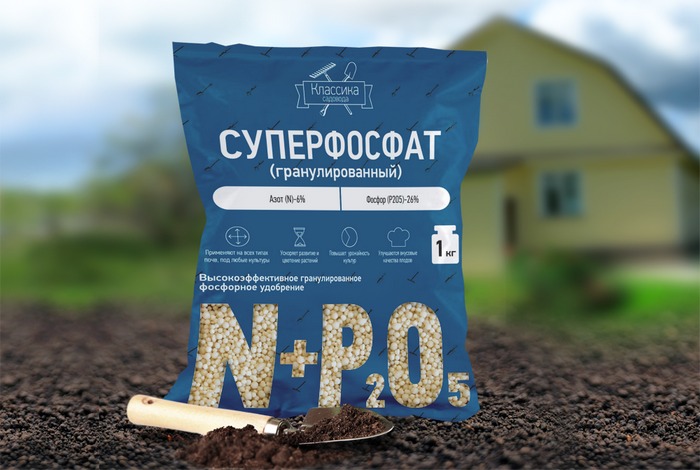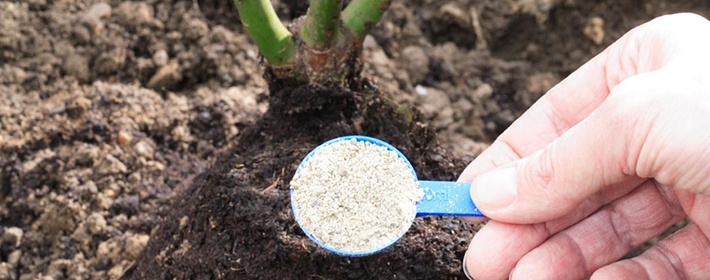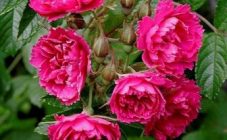Content:
The wild rose is distinguished by its delicate simple flowers, bright fruits and picturesque bushes. The beauty of an unpretentious plant is natural and harmonious. Having picked up the right variety of early flowering rose, you can plant it in any type of soil. A wild rose will add zest and become a decoration of each site.
Description and characteristics
The wild rose is often called the wild rose. The flower belongs to wild plants of the Rosaceae family. Plot owners often plant wild rose saplings for the purpose of producing rose hips and for decorating the yard.
There are more than 75 varieties of rose hips. The rose can be found in almost any area of the country. The only exception can be the northern regions. Rosehip refers to light-loving plants. In nature, a plant of the Rosaceae family can be found close to:
- forest roadsides;
- edges;
- coastal area;
- mountain slopes;
- lakes.
Wild rose is a flower that, growing, can form large clumps and penetrate into the territory of settlements. Rosehip often grows next to elderberry. The flowering of the plant begins in the 20th of May and ends by the beginning of July. Fruit ripening ends in early to mid September, depending on the variety. The wild rose has numerous pistils and stamens. Every evening, rose flowers begin to fold their petals in order to bloom again in the morning and please with their beauty.
Fruiting of the plant begins at the age of 3. A large harvest can be expected for 10-12 years of the life of the bush. The fruits of roses have a spherical or ovoid shape, their surface is smooth, bare, colored in an orange or red hue. The inner wall of the fruit is covered with hairs. Sepals are preserved in the upper part of the fruit. To achieve stable fruiting, a couple of bushes of different types should be planted close to each other, which will bloom in the same period. After harvesting the fruits, they should be dried. Rosehips can be brewed and drunk instead of tea, or you can make jam or compote.
Rosehip branches decorated with berries will look great in an autumn dry bouquet. The life of a plant in nature can last 300-400 years.
Popular varieties
A wild rose can bear fruit in a variety of colors, namely:
- purple;
- bright red;
- brown;
- orange;
- black.
The most popular varieties with a large number of useful properties include:
- Maisky is a variety that is common in the Middle zone of the country. Bushes can be found in forest clearings and clearings. May rose hips are quite unpretentious to the type of soil, tolerate various ailments and withstand frosts. If you take good care of the shrubs, you can soon get a good harvest.
- Dog rose (common). This plant variety is often used for hedges. Fragrant flowers of light pink shades begin to bloom in early summer. Closer to autumn, instead of flowers, red-orange fruits appear on the wild rose. Vigorous bushes can reach 3 m in height. The root system of the Dog Rose is quite powerful.The branches have strong curved thorns. Very often, site owners acquire this particular variety of wild rose due to the fact that it is unpretentious, winter-hardy and sustainably tolerates most ailments. Not a single description will convey all the charm of the plant during the flowering period.
- French rosehip native to southern Europe, Russia and the Crimean peninsula. It can also be found in Thailand. A low-growing bush with a minimum number of branches barely grows to 80-90 cm. The root system develops horizontally. Sharp thorns and small needles are located on the stem of the bush and on the branches. Bright red flowers bloom at the tips of the shoots. Large sepals have wide-spread lateral feathers. The French terry bush can become a houseplant.
- Thorny (femoral) type of rose. The undersized shrub has a large number of prickly needles and thorns. As soon as the flowering period begins, the bush is literally dotted with white, pleasantly smelling flowers. Often a similar dog rose can be found in a public garden or a front garden. Small size prickly rose flowers. In September, instead of snow-white flowering, hard, rather dry fruits are formed on the bush, which, as they ripen, begin to turn black.
- Devil Rose Lacorn. The name speaks for itself. The undersized plant is distinguished by the complete absence of thorns on the branches. Large and bright flowers are located on a long peduncle. As soon as the petals begin to fall off, the pedicels droop. The long spindle-shaped fruit literally hangs down like an earring in the autumn. Fruits and pedicels have glandular bristles with sticky drops at the tip. This gives a special look to the alpine rose hips. The rose will look very impressive and will decorate your home garden.
- The wild rose Altay is a perennial herbaceous shrub, the height of which is within 2 m. The branches of the rose are covered with stellate hairs, on the foliage the hairs are velvety-silky. Althea has a very dense root system. In the early years, roots grow wildly. The flowers are located on short stalks. The fruit is flat, disintegrating along the seams as it ripens. Rose maintenance is not a difficult process.
Features of planting and crop care
Almost all wild rose varieties reach a height of more than 2.5 m. Rosehips will grow well in illuminated areas. In shading, flowering will be short-lived, and fruiting may be practically absent. Fruits begin to appear only in the second year of the seedling's life. Rosehip can take root even in poor soil due to its well-developed root system, which penetrates to a considerable depth. Wild rose is hardy and able to survive prolonged rains.
When planting a seedling, it is important to add fertilizer to the planting pit:
- 1 tbsp. a spoonful of potassium salt should be mixed with 2 tbsp. spoons of superphosphate.
- After adding 6 liters of horse manure to the mixture, mix the ingredients.
- Fertilizer is applied to the planting pit and sprinkled with soil on top.
To get a good rosehip crop you will need:
- When planting seedlings horizontally, deepen them a little more than the situation usually requires.
- The aerial part is shortened in such a way that only 1/3 of the length is left.
- The soil around the stem of the bush is compacted, abundantly moistened and mulched.
- The emerging root shoots can be left only in the first year after planting the seedling. In subsequent ones, you can leave only the best shoots.
- Zero-order branches may not be shortened. Fruits and flowers remain on their tops. Only 12 months after planting can these branches be shortened.
- On a two-year branch, last year's lateral growth can be shortened so that 2-3 buds remain.
- Following all the rules and recommendations, you can collect 9-11 kg of berries from each bush 4 years after planting, and each will be large.
- Harvesting should be done in early September. At this time, they usually acquire a bright red or brown color.
You can propagate a wild rose:
- offspring;
- green handle;
- root cuttings.
The latter method is used to preserve the characteristics of the mother plant in the offspring. Reproduction by root cuttings is available even to a novice florist. This is the easiest way to breed this plant. A week before planting, you should start harvesting root cuttings. Their length should be within 10-12 cm. Then they are planted horizontally to a depth of no more than 15 cm. Before the first sprouts appear, the soil on the site should be systematically loosened, moistened and cleaned of weeds. As soon as the sprouts reach 2 years of age, they can be transplanted to the selected area.
Diseases and pests
The main pest of rose hips is considered to be the rose fly, which damages the bulk of the crop. The insect hibernates in the ground at a depth of 7-10 cm. That is why it is important to systematically dig up the ground and spray with preparations like BI-58.
In addition to the rose fly, aphids, wild rose and raspberry-strawberry weevil can damage the rose. Pests damage buds and fruit pulp. Preventive spraying of the bushes will rid the rose of these insects.
Among the ailments that can affect the rose hips, rust is distinguished, which damages the stem of the plant, foliage and fruits. By treating the rose with fungicides, you do not have to worry about the health of the bushes.
Wild rose is a magnificent flower that captivates with its amazing appearance and unpretentiousness. The plant will decorate any yard and will become a real highlight of the garden.

















